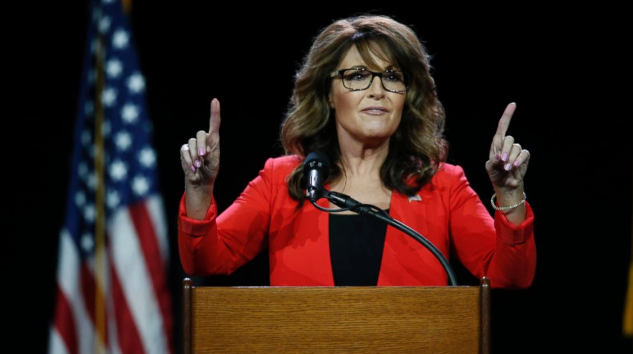
It is Jan. 2016 in a heated barn on the Iowa State University campus. In a bitterly contested race for the Republican nomination, businessman Donald Trump has an ace up his sleeve to help him win the crucial Iowa caucus. That ace is former Alaska Governor Sarah Palin. She goes on stage, endorses the candidate and then points to the press box in the back: “Media heads are spinning,” she exclaimed. “This is gonna be so much fun.”
Five years later, on April 1, 2022, the now former governor Palin announced her candidacy for the lone Alaska seat in the House left open by the death of longtime representative Don Young. Two days later, she received the endorsement of former President Donald Trump. The endorsement belies Palin’s preeminence; in her 13 years of activism since resigning as governor, she crafted the blueprint that precipitated the party’s rightward slide into divisive culture war politics, culminating in the unlikely rise of our 45th president. To understand this phenomenon, though, we first need to go back before Palin was a power broker for Republicans or a punchline for Tina Fey, back to when she was just an obscure governor.
In 2008, veteran Arizona Senator John McCain was faced with the decision of selecting a running mate. In order to offset his image as an aging, insufficiently conservative Washington insider, he selected Palin, the young conservative outsider. Palin was anti-abortion and pro-oil drilling, and she would be present to appeal to the kinds of strident, outspoken conservatives that had always been wary of the more moderate McCain. McCain and Palin lost decisively to the Obama-Biden ticket.
However, what emerged from that defeated campaign was an infectious energy that propelled Palin to national prominence. Palin was beloved by conservative commentators and the radical wing of her party for her outspoken, unapologetic nature. On the campaign trail she spoke about the “real America” that existed in the patriotic small towns that formed her base. After her infamously poor and widely parodied interviews with Katie Couric, Palin supporters argued that she was the victim of a biased, elitist media, a press that cared little for the Americans who similarly came from humble backgrounds and small towns.
Palin became a political celebrity in the years after the 2008 campaign, writing books, becoming a TV star with shows on Fox News and TLC and raising money with her own political action committee SarahPAC. She put these skills to use in the 2010 midterms, becoming a key fixture in the right-wing Tea Party movement and frequently appearing as a keynote speaker at rallies. It was Palin who coined the term “death panels” to describe the hypothetical rationing of healthcare by bureaucrats under President Obama’s healthcare reform. She also criticized Obama for a perceived lack of patriotism. In her book
America By Heart: Reflections on Family, Faith, and Flag
, she expressed her belief that “ordinary Americans are tired of Obama’s global apology tour and of hearing about what a weak country America is from left-wing professors and journalists.”
While these attacks might seem outlandish, they changed conversations within conservative circles and began to affect the political process at large. The hysteria over ‘death panels’ helped rally conservatives in 2010 to take back the House and begin their decade-long crusade to repeal the Affordable Care Act. Attacks on Obama’s patriotism devolved into the birtherism movement. The moderate politics of John McCain were no more.
These movements illustrate a clear plan for modern American conservatism: go heavy on offense, attack the opposition with little evidence to control the media cycle and fan outrage within its own political base. Palin’s strategy is based around targeting identity and patriotism. She talked most about the “real America,” which coincidentally encompassed the regions that supported her the most, and questioned Barack Obama’s patriotism and birth country. Palin does not have an in-depth knowledge of policy, at one point claiming that Alaska’s close border with Russia endowed her with foreign policy wisdom. Instead, she pivots to culture war issues that she can use to fan outrage. These strategies are highly reminiscent of another, more recent politician.
It’s hard to say that Palin was the sole influence on Donald Trump’s style of politics, but acting as if the former president’s divisiveness, shunting of conventions and attacks on the press are a new development ignores the events of the 2008 McCain ticket. Looking back, it appears almost predestined that someone would seize upon the plan bubbling up out of Wasilla, Alaska. The contemporary GOP focuses on inflaming tensions on topics from school curriculum to police funding to kneeling during football games. These topics neither create policy nor solve problems, but they do create firestorms of outrage. Who could have guessed that all it took was one small-state governor to light the first match? As Palin goes, so goes the nation.
















